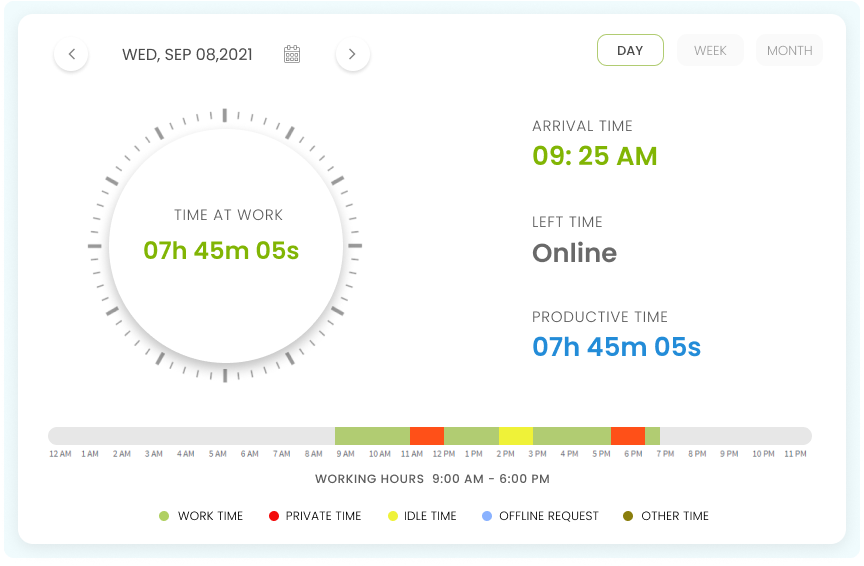Working from home sounds like a dream — until your office takes over your living room, your kitchen table, and your evenings.
One moment you’re sending emails; the next, you’re checking Slack during dinner.
Welcome to the blurred world of remote life.
Finding digital balance isn’t just about productivity — it’s about protecting your mental space. Here’s how to draw the line between work and life (and actually stick to it).
1. Redefine What “Work Hours” Mean to You
Remote work means flexibility, not availability 24/7.
Start by deciding when you want to be reachable and when you don’t.
Try this:
- Pick a realistic start and finish time.
- Communicate it with your team or clients.
- Set an automatic “Do Not Disturb” on Slack or email after hours.
💡 Tip: Apps like Clockify or RescueTime can help you visualize where your time really goes.
Boundaries only work when they’re respected — starting with yourself.
2. Create a Clear Physical Separation
If your laptop lives on the couch, so does your stress.
You don’t need a separate office — just a defined work zone.
Ideas that help:
- Use a small desk divider or curtain to signal “work only.”
- Keep your laptop and notebooks out of sight after hours.
- Change your chair or position when switching between work and leisure.
The act of closing your workspace tells your brain: “We’re done for today.”
3. Practice a Digital “Clock-Out” Routine
Think of this as your new commute — a ritual that separates your workday from your evening.

Try:
- Turning off your computer at the same time each day.
- Playing a specific song that marks the end of work.
- Switching from work clothes to something comfy.
🎧 Bonus: Create a “clock-out” playlist — upbeat, relaxing, or whatever helps your mind transition.
4. Start and End Your Day Without Screens
Scrolling through messages right after waking up or before sleeping keeps your brain in work mode.
Protect the first and last 30 minutes of your day as no-screen time.
Ideas that work:
- Stretch, journal, or meditate instead of checking emails.
- Read a physical book at night.
- Use a sunrise-simulating alarm clock to wake naturally.
✨ Your energy isn’t endless — it renews when you disconnect.
5. Use One Calendar for Work and Life
When your professional and personal commitments live in separate apps, overlap is inevitable.
Combine them to see your true schedule.
Tools like Google Calendar, Notion, or Motion let you color-code tasks (blue = work, yellow = personal).
This helps you visualize balance — and prevents double-booking your time (and your energy).
6. Schedule Breaks as Seriously as Meetings
Breaks are not optional. They’re maintenance.
Block short breaks every 90 minutes using:
- Pomofocus or Serene for timed deep-work sessions.
- Stretchly or Mindful Break for movement reminders.
Even two minutes away from your screen can reset your focus and prevent digital fatigue.
7. Set App Boundaries (and Stick to Them)
If work apps follow you everywhere, you’ll never truly unplug.
Practical tweaks:
- Turn off push notifications on your phone.
- Remove work apps from your home screen.
- Use focus modes like “Work” and “Personal” on iPhone or Android.
🪄 Try: Freedom, Focus Mode, or Forest to block apps during downtime.
8. Protect Your Evenings From “Just One More Thing”
The biggest burnout trap? Telling yourself, “I’ll just finish this quick.”
That mindset keeps your brain alert long after you’ve logged off.
Create a hard stop rule:
- After your workday ends, no task-related tabs.
- Silence work chats after 7 p.m.
- If an idea pops up, jot it down and revisit it tomorrow.
Productivity thrives in rhythm — not in overdrive.
9. Embrace Offline Activities
Balance isn’t only digital — it’s about rediscovering analog joy.
Simple swaps:
- Cook dinner without screens.
- Take a walk without headphones.
- Sketch, read, or garden for 15 minutes.
Your mind needs unstructured time to stay creative and resilient.
10. Remember Why You Chose Remote Work
Working from home was meant to give you freedom, not fatigue.
Reconnect with the reasons you started — more time with family, flexible hours, or space to travel.
When you protect your balance, you protect that freedom.
And that’s the true success of remote work.

